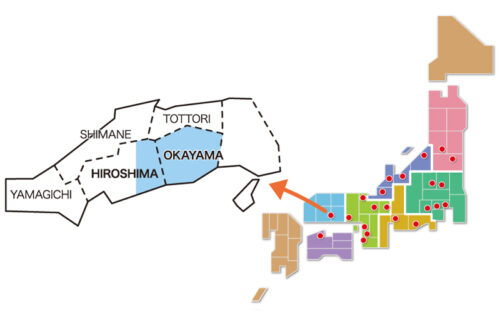Bichu-Bingo Region

Denim and thick cotton fabrics
The Bichu-Bingo textile region is renowned for its denim and thick cotton fabrics. Bichu and Bingo in this context refer to the present-day Okayama and Hiroshima Prefectures. The textile industry in Okayama Prefecture originated from cotton growing in the Edo Period (1603-1868), expanded to the production of denim and cotton fabrics and ultimately also encompassed dyeing, washing and sewing. The area around Fukuyama City in Hiroshima Prefecture was a hotbed for the production of Bingo-gasuri (Kasuri) textile, which would later be switched to denim after the war. The coloring process for Kasuri involved the so-called hank dyeing method, which goes right to the core of the thread, thus precluding any scope to express the denim’s ‘discoloration’ feature. This is apparently why a local manufacturer, Kaihara Corporation, devised the rope-dyeing machine, which was capable of leaving the core of threads undyed and paved the way for full-scale denim production. With apparel manufacturers also present and available within the same textile region, a number of factory brands emerged.
Conversely, the OKAYAMA PREFECTURAL TEXTILE DYEING INDUSTRIES COOPERATIVE ASSOCIATION launched the ‘KURASHIKI-ZOME’ initiative, with sustainable manufacturing in mind. They aim to provide textiles that maximise safety and security by producing to the most stringent global standards and avoiding the use of hazardous chemicals, amply reflecting the concerns of our era.
